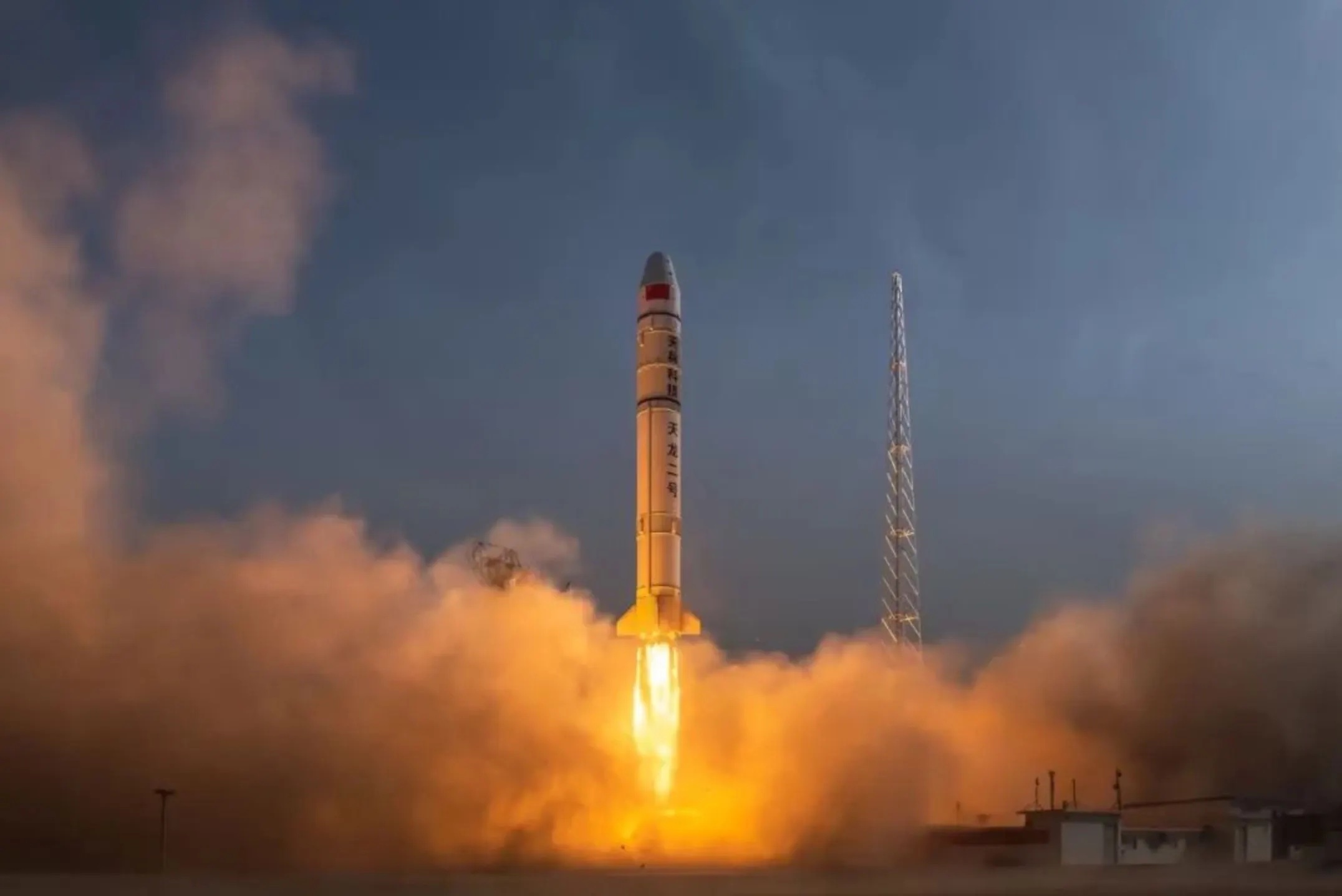9.07.2023

Liftoff of the first Tianlong-2 kerolox rocket from Jiuquan in April 2023. Credit: Space Pioneer
HELSINKI — Chinese rocket firm Space Pioneer has secured C-round funding for its Tianlong-3 medium-lift reusable launch vehicle.
Space Pioneer, full name Beijing Tianbing Technology Co., Ltd, announced the funding round July 5. The company’s first launch attempt in April saw the Tianlong-2 rocket make Space Pioneer the first Chinese commercial outfit to reach orbit with a liquid propellant launcher.
The company has now raised a total of three billion Chinese yuan ($414 million) across 11 rounds since its establishment in 2018. In February the firm announced it had secured “B+” and “Pre-C” strategic funding rounds.
A number of the leading investors are linked to the Chinese state. These include China International Capital Corporation (CICC), a partially state-owned investment vehicle, CCB International, belonging to the China Construction Bank Corporation, and CITIC Construction, the engineering and construction arm of Chinese state-owned CITIC Group, and Zhejiang University Lianchuang. Venture capital also plays a part in the funding.
The new funds will be used for the development of the Tianlong-3 kerosene-liquid oxygen launch vehicle and its engine and the construction of a dedicated launch complex at the Jiuquan national spaceport. The funds will also go towards developing mass production capabilities and recruitment.
The first launch of the Tianlong-3 rocket is currently scheduled for May 2024. It is intended to be somewhat comparable to the Falcon 9. If successful, Space Pioneer claims it will be able to launch 30 times per year from 2025.
Tianlong-3 (“Sky Dragon-3”) is a two-stage kerosene-liquid oxygen rocket with a reusable first stage. Space Pioneer’s webpages state that the rocket will be capable of lifting 17 tons of payload to low Earth orbit, or 14 tons to 500-kilometer sun-synchronous orbit.
It will have a takeoff mass of 590 tons and produce 770 tons of thrust. The 71-meter-long Tianlong-3 will have a diameter of 3.8 meters. Previously, many commercial Chinese rockets used 2.25 or 3.35-meter-diameter stages, the dimensions as those of most Long March rockets.
The Tianlong-3 is, according to Space Pioneer, tailor-made for launching satellites for China’s national communications megaconstellation. Tianlong-3 will provide “important strategic support for the country’s new satellite Internet infrastructure,” according to the July 5 statement. The planned 13,000-strong Guowang constellation is seen as China’s answer to Starlink.
More recently established Chinese commercial launch companies including Space Pioneer and OrienSpace are opting to develop much larger launch vehicles than earlier movers, which have committed to launchers with payload capacities on the order of a few thousand kilograms. This shift has been initiated by the emergence of the possibility of contracts for Guowang and commercial cargo missions.
Space Pioneer says it has already signed 10 orders for launches on the Tianlong-2.
The company also has plans for a Tianlong-3H, a triple-core version in the same style as the SpaceX Falcon Heavy, and the Tianlong-3M, a single core rocket tipped with a reusable spaceplane.
Space Pioneer initially started out developing engines burning green monopropellantbefore changing direction. The firm also apparently scrapped development of the Tianlong-1 rocket.
The firm has received sponsorship and investment from Zhangjiagang, a city in Jiangsu province on the Yangtze river. Space Pioneer is building rocket manufacturing facilities in the city and the Tianlong-2 launch also bore the name “Zhangjiagang.”
Meanwhile, fellow Chinese commercial firm Landspace is gearing up for the second launch of its Zhuque-2 methane-liquid oxygen rocket from Jiuquan. Airspace closure notices indicate a launch window of 1:53 a.m. to 4:14 a.m. Eastern July 12.
Beijing-based iSpace also recently tested engines for its Hyperbola-2 methalox launcher.
Quelle: SN

